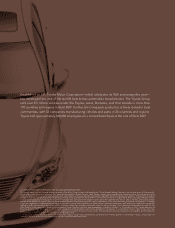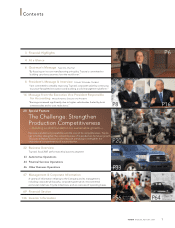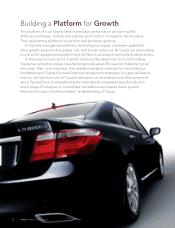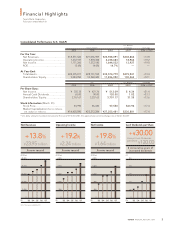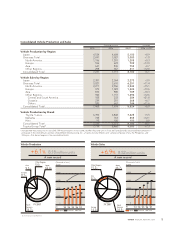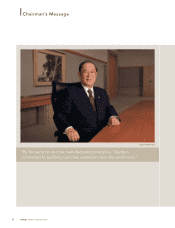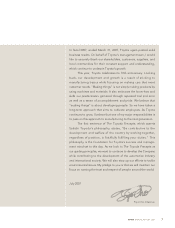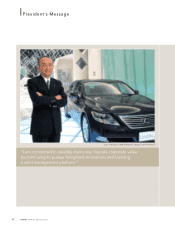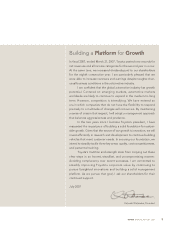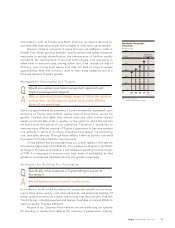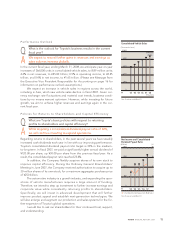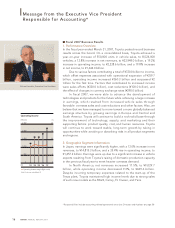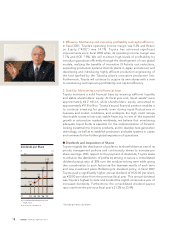Toyota 2007 Annual Report Download - page 12
Download and view the complete annual report
Please find page 12 of the 2007 Toyota annual report below. You can navigate through the pages in the report by either clicking on the pages listed below, or by using the keyword search tool below to find specific information within the annual report.
10 ANNUAL REPORT 2007
An Interview with the President
Katsuaki Watanabe, President
Operating Income by Region
FY 2004
FY 2007
Europe
4.3%
Other Regions
2.2%Japan
66.4%
Asia
3.6%
North
America
23.4%
Europe
6.1%
Other Regions
3.7%Japan
64.9%
Asia
5.3%
North
America
20.0%
Market Overview
Worldwide, the deep-seated demand for automobiles remained un-
changed. However, differences among regional automotive markets
emerged throughout the year. Markets in the United States and Europe
remained solid, and the Chinese market continued to see strong growth.
On the other hand, Asian markets slumped, especially in Indonesia and
Taiwan. And, Japan’s market shrunk year on year, mainly in the registered
vehicle category.
Meanwhile, demand is shifting toward fuel-efficient vehicles and compact
vehicles due to global oil price hikes and increasing concern over environ-
mental issues. That trend will likely continue as gasoline prices remain high
and countries strengthen environmental regulations. Due in part to those
factors, I expect that competition in the global automotive industry will
become even more fierce, especially in the areas of environmental tech-
nologies and cost competitiveness.
Performance Evaluation
I think we deserve credit for achieving our best-ever performance while
investing for the future. We were able to grow earnings in fiscal 2007 due to
increased global vehicle sales and cost reduction efforts. This growth came
despite more challenging business conditions, such as material price hikes
and tougher sales competition as well as higher fixed costs, such as capital
investment and research and development expenses. In addition, I think we
have established a balanced earnings structure in each region.
Management Issues
In the past 20 years, car ownership around the world has increased by 100
million vehicles every five years. By 2010, ownership is projected to exceed
one billion vehicles. Led by Brazil, Russia, India, and China, emerging mar-
kets have fueled that growth. In regions that already have widespread
Looking back over the past year, what were the main industry
and market trends?
Competition is becoming more intense, especially in the areas
of environmental technologies and cost competitiveness.
Q
A
Given those market trends, what is your evaluation of Toyota’s
business results?
Despite tough business conditions, we increased revenues and
earnings.
Q
A
What issues does Toyota need to overcome in order to achieve
sustainable growth?
For sustainable growth, we need to turn issues and risks into
opportunities.
Q
A
Note: Fiscal years ended March
31


